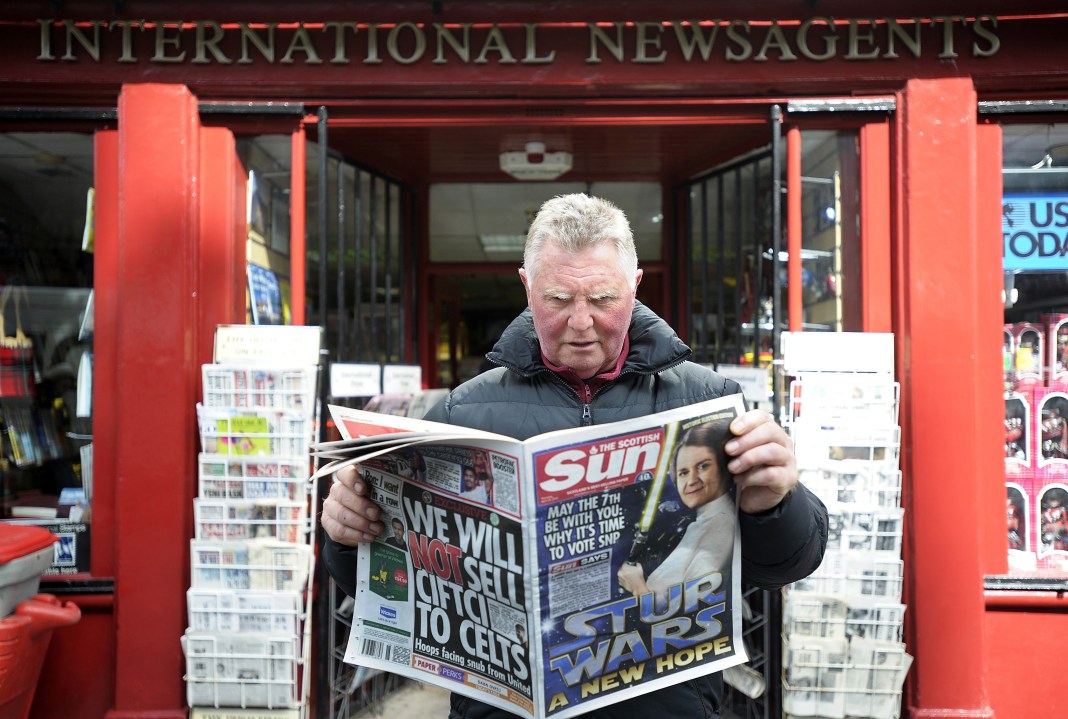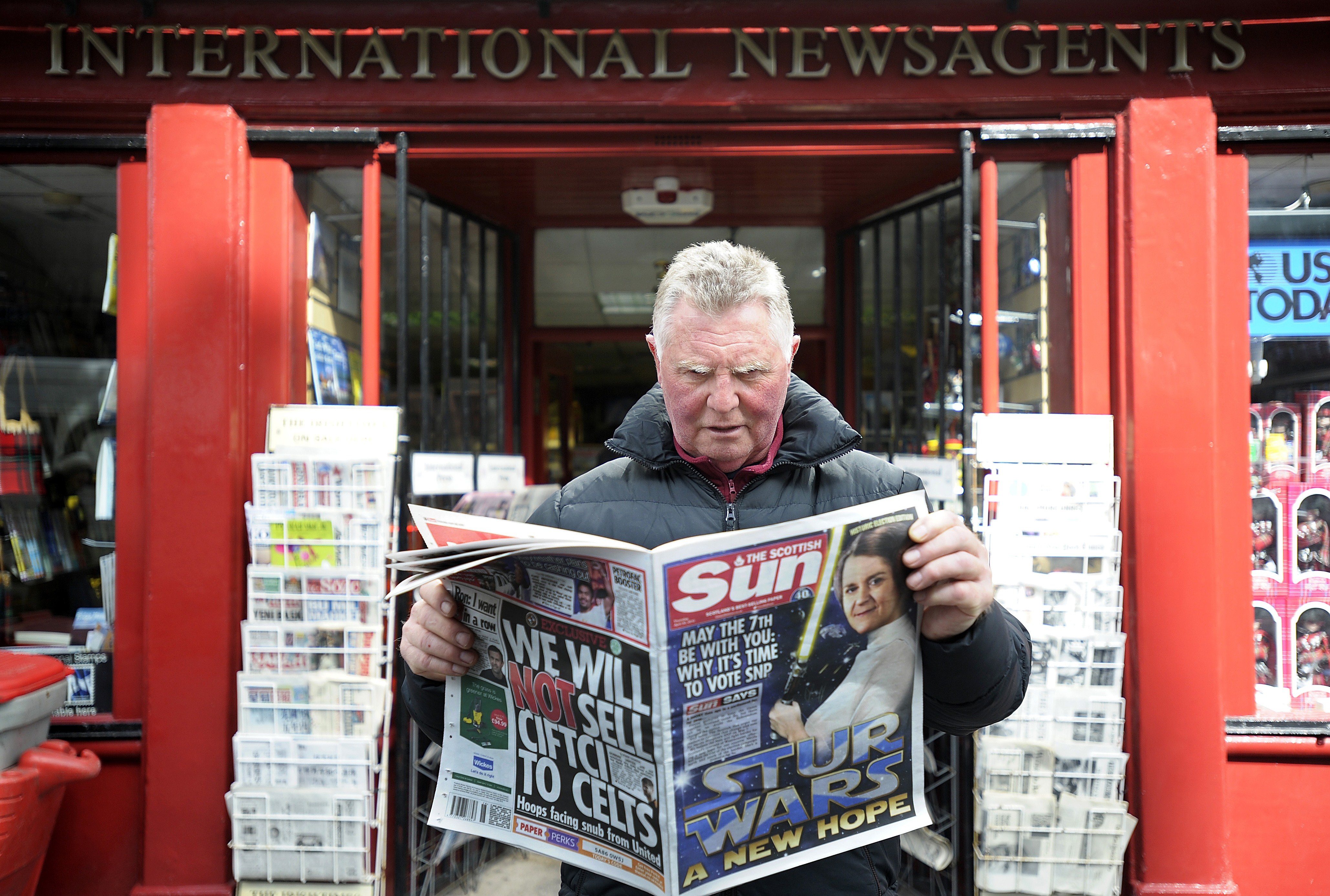How much influence will newspapers have in this election? Less than ever before in print, if circulation figures (above) are anything to go by. Yet paranoia remains. On certain days, newspapers do get excited and act like they’re trying to win the election. Today’s Sun digs up that infamous picture of Ed Miliband and urges readers to ‘Save our bacon‘, the Telegraph pictures Nicola Sturgeon with the headline ‘Nightmare on Downing Street‘, while the Mirror leads with ‘Major fail‘ on comments by the former Prime Minister on inequality. Meanwhile, the Times and Mail have followed the Independent and Evening Standard in putting their weight behind a Cameron-led government.
The truth, of course, is that generally newspapers serve up what they believe their readers want. They may not always get it right – some front pages during this election have been overtly political, not to mention unkind – but the aim of the game is fighting for readers from an ever-declining pool.
In his Spectator review of Polly Toynbee’s Better or Worse, Danny Kruger observed:
The authors complain that 75 per cent of the circulation of daily papers is ‘owned by … right-wingers’. What this actually means is that 75 per cent of newspaper readers choose to buy right-wing papers. Yet Toynbee and Walker imagine that people cannot make free choices; that the decisions which matter are taken on high; and therefore that it is the job of the ‘progressive’ Left to take them.
Newspapers do have influence, particularly on broadcasters, and Fleet Street at this election has stood to the right of the general public overall. But rather than programmable robots at the command of all-powerful proprietors, readers are discerning customers who look for a newspaper that shares their interests. To underline Kruger’s point, here’s a graph showing newspaper readers broken down by political affiliation.
So – surprise, surprise – Tory-supporting newspapers have Tory-supporting readers. Same with Labour-supporting newspapers. There is a two-way relationship here, but most of the traffic traffic moves at the will of readers’ own minds. There aren’t figures for the Scottish Sun, but it’s a fair bet that its readers have – like so much of Scotland – defected to the SNP. And yet no one would dare to suggest the rise of the SNP has been led by press barons; rather the Scottish Sun has followed the political choices of its readers.
That is why the Independent made a gamble yesterday with its decision, in an editorial titled ‘In defence of liberal democracy‘, to endorse the Coalition. The piece is consistent with the direction of the paper under Amol Rajan – hardly a left-winger – but it does make it the only national during this election to have made a stance generally at odds with its readership: 46 per cent of whom intend to vote Labour, with only 15 and 11 per cent supporting the Liberal Democrats and the Tories respectively.
The Guardian now has a solidly Labour-supporting readership, having swiftly moved on from its much-criticised endorsement of the Liberal Democrats in 2010. Boris Johnson’s wooing of ‘Blairite’ Guardianistas is somewhat out of date: 58 per cent intend to vote Labour, while the paper’s readers are more than five times as likely to back the Greens (21 per cent) than the Conservatives (4 per cent).
The Tories will be particularly pleased to see Sun readers backing the party over Labour by 50 per cent to 20 per cent, however. At the last election, this much-targeted demographic backed the Conservatives by a narrower 43 to 28 per cent. The relentlessly pro-Tory coverage in Britain’s most-read daily will have some effect, but don’t expect it to be ‘The Sun wot won it’ come Friday morning.







Comments